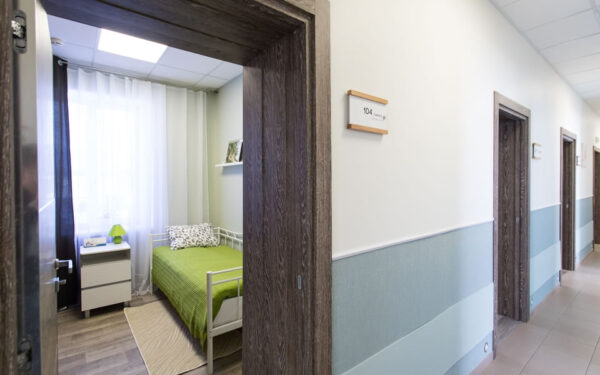Mercer Report Shortcomings

At Marcum LLP, we are proud of the healthcare services team we have assembled and the services we provide to our many clients throughout the country and, for purposes of this article, to the long term care industry. As healthcare industry leaders, we feel obligated to read and provide editorial commentary on documents released by federal and state governments concerning proposed regulatory/ reimbursement changes, as well as CMS and state publications.
It’s no secret that census in the long term care arena has been on a decline. Much of this decline is attributable to a gap in aging that appeared in births prior to the baby boom era. This, coupled with the growth of home and community-based care (HCBS) and the ballooning of the assisted living industry, has strained the long term care industry. Compounding the situation — with federal and state goals to reduce institutionalized services through such programs as Money Follows the Persons — changes in reimbursement and payments rates for Medicaid residents that have either barely increased over 15 years or kept up with inflation create an equation for turmoil.
There is a silver lining to this story; however. The baby boomers are beginning to age; thus, we are seeing an increased need for nursing home care. Connecticut alone saw a 1.4% spike in nursing home occupancy from 2017 to 2018 (based on the CMS database of filed Medicare cost reports). At Marcum, we believe census will continue to steadily rise over the next five years and the industry will be right-sized with high quality providers.
This leads me to the notion of reviewing industry-specific data. On July 22, 2019, the state of Connecticut released a report entitled State of Connecticut Medicaid Long Term Care Demand Project prepared by Mercer. Those familiar with the report refer to it as the Mercer report. The intent of the document is to illustrate an approximate 50% declining need for Medicaid nursing home beds in Connecticut by 2040. At first glance, that conclusion may seem self-evident. However, a careful review of the data used to prepare the Mercer report and a comparison with industry-specific and state-prepared data reveal numerous flaws. Some of our concerns pertaining to the Mercer Report data include:
Census
We’ve identified discrepancies in the Mercer report census data. The state of Connecticut published a census report (prepared by the state Office of Policy and Management) illustrating an overall state occupancy rate of 87% for the fiscal period ended September 30, 2017, and identifying total available capacity of 26,318 beds (inclusive of skilled nursing and rest home beds). Hence, 22,837 residents were cared for in nursing home beds in 2017. Of the 22,837 residents, 74%, or 16,899 residents, received Medicaid assistance from the state. This calculation is at odds with the Mercer report, which states that 14,908 residents received state assistance.
Therefore, since the Mercer report utilizes 2017 as the base for all future projections, the needs it projects are significantly understated. Using the variance between Mercer’s findings and the calculation above, we estimate that bed need is understated by 14%, or 1,159 beds.
Another example of questionable outcomes relates to the utilization of Medicaid claims data to quantify need as opposed to occupancy. Claims data only represents billed and paid Medicaid claims. Hence, Medicaid-pending residents are not yet billed or paid; the Mercer report give no consideration to this population. Based on our experience and because of state delays in processing, Medicaid-pending residents can represent as much as 20% of a facility’s population. This is not so say that the data is off by 20%; but it does raise a question of the validity and accuracy of the predicted need.
Finally, the data used in the report does not take into consideration facilities that have closed or gone out of business since 2017. Hence, the proposed bed reduction is overstated by approximately another 1,000 beds.
Labor Needs
While it’s no secret HCBS continue to be the forefront of the state’s goals and objectives for the future care needs of Connecticut’s elderly, two factors are not considered:
- Labor Pool
- Over-Expansion of Assisted Living/Memory Care (senior living)
Labor Pool
HCBS as well as senior living services continue to put a strain on the already dwindling labor pool. The average turnover of CNAs and home health aides can be as high as 200-300% per year. The Mercer report leads us to believe that the home and community-based workforce needed will come from a reduced volume of nursing home beds.
What the report fails to mention is the following:
- Ratio of patient to caregivers. On average, the duration of a homecare skilled nursing visit is approximately 1.26 – 1.46 hours. Hence, in an 8-hour day, approximately 5.50 skilled visits can be performed per person. A significantly higher volume of patients are served in a nursing home setting.
- Home health aide visits. While more numerous and shorter in duration than skilled visits, home health aide visits will be similarly impacted. Basically, there won’t be enough people to care for all residents’ needs in a home and community based setting.
- Skilled care vs HCBS. The Mercer report fails to mention that care provided in a nursing home is 24-hour skilled care. Care provided in a home and community-based setting may be skilled, but it is only intermittent.
Over-Expansion of Assisted Living/Memory Care
A recently reviewed five-year certified market study found that the marketplace is already over saturated with memory care communities and will continue to be so until to 2023, while the assisted living community maintains marginal availability for expansion. Both programs actually create challenges for both HCBS programs and skilled nursing facilities. These challenges are not addressed in the Mercer report. Such challenges include but are not necessarily limited to the following:
- Staffing for HCBS needs are absorbed by assisted living and memory care units at starting wage rates well in excess of those paid in HCBS.
- Both assisted living and memory care programs are already caring for a frail and elderly population that arguably qualifies for skilled care. Hence, these residents won’t go through the continuum from an assisted living environment to home care and then skilled nursing. Instead, they will be relocated directly to skilled nursing facilities, have higher acuity levels, and also most likely already be spent down and thus qualify for Medicaid. Hence, while the state’s plan illustrates a temporary savings in Medicaid spending, it does not consider further changes in Medicare and private spending, which will further increase Medicaid utilization. This conclusion challenges the plan’s detailing of decreasing Medicaid utilization.
In our minds it comes down to simple supply and demand. While we agree the marketplace is changing for the entire continuum, we don’t agree with a projected 50% reduction in skilled nursing Medicaid beds by 2040. We believe the industry will see some right–sizing and we believe there will remain a continued need for a full continuum of care for the aging population.





